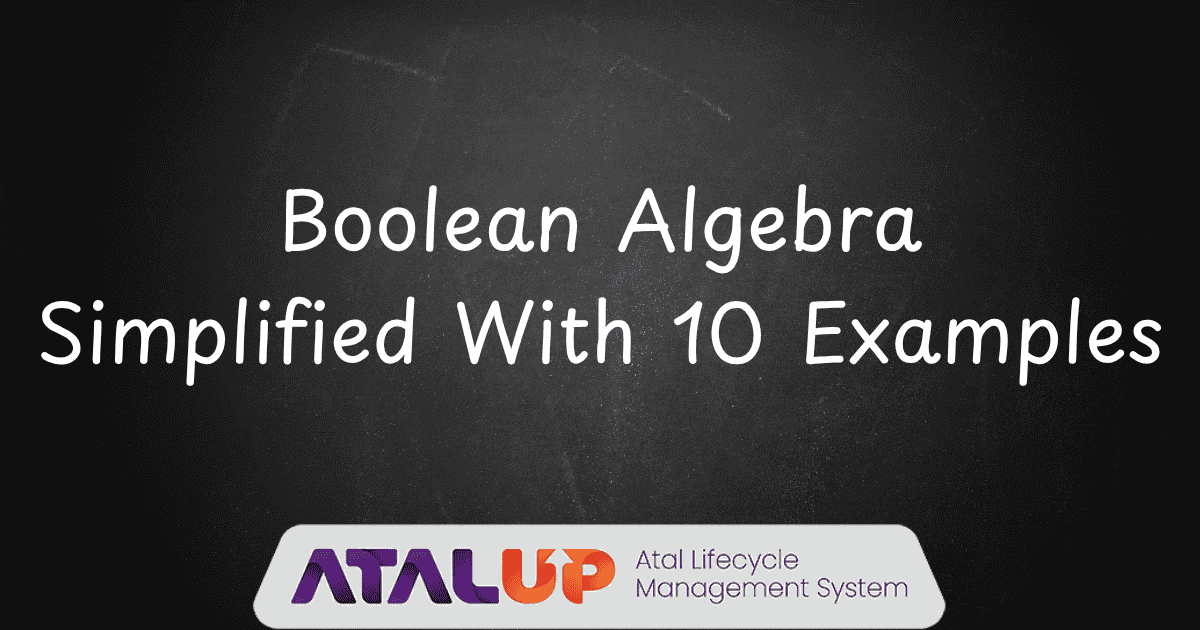
Boolean algebra may sound like a big technical term, but it is actually quite simple to understand once you break it down. It is a branch of mathematics that deals with two values only: 1 (True) and 0 (False). It uses logical operations like AND, OR, and NOT instead of regular addition, subtraction, or multiplication.
Why is it important? Because Boolean algebra forms the foundation of all digital devices. Every time you use a calculator, a smartphone, or a computer, Boolean algebra is running in the background to make decisions and perform tasks.
In this blog, let us explore what Boolean algebra is, go through 10 easy Boolean algebra examples, understand the laws of Boolean algebra, and learn how STEM education helps students grasp these concepts practically.
10 Boolean Algebra Examples
Here are 10 examples explained in simple words so students can relate them to real life.
1. Simple AND Operation
Imagine two switches A and B for a light. In Boolean algebra, AND means both must be ON for the light to turn on.
If A=1A = 1A=1 (ON) and B=0B = 0B=0 (OFF):
A⋅B=0A \cdot B = 0A⋅B=0.
This means even if one switch is OFF, the light stays OFF.
2. Simple OR Operation
OR means any one switch ON is enough for the light to turn on.
If A=1A = 1A=1 and B=0B = 0B=0:
A+B=1A + B = 1A+B=1.
Here, since at least one switch is ON, the light will turn ON.
3. NOT Operation
NOT simply flips the value. If something is ON, it becomes OFF, and vice versa.
If A=1A = 1A=1:
A‾=0\overline{A} = 0A=0.
So, NOT changes the value to its opposite.
4. Combination of Operations
Let us try combining them. For example: (A+B)⋅C(A + B) \cdot C(A+B)⋅C.
First, we do A+BA + BA+B (OR operation), then multiply the result with C (AND operation). This is how complex decisions are made in circuits.
5. Idempotent Law
In Boolean logic, doing the same thing twice does not change the result.
A+A=A and A⋅A=A
This means repeating a value has no effect on the outcome.
6. Null Law
Adding 1 in OR always gives 1, and multiplying by 0 in AND always gives 0.
A+1=1A + 1 = 1A+1=1 and A⋅0=0A \cdot 0 = 0A⋅0=0.
For example, if one switch is permanently ON, the light will always stay ON regardless of the other switch.
7. Domination Law
Here, multiplying by 1 or adding 0 keeps the original value unchanged.
A⋅1=AA \cdot 1 = AA⋅1=A and A+0=AA + 0 = AA+0=A.
Think of it like: multiplying by 1 does not change the value, just like in normal math.
8. Involution Law
Applying NOT twice returns you to the original value.
A‾‾=A\overline{\overline{A}} = AA=A.
If you press a switch two times, it goes back to its original state.
9. DeMorgan’s Law
This law helps simplify complex operations:
A+B‾=A‾⋅B‾\overline{A + B} = \overline{A} \cdot \overline{B}A+B=A⋅B.
This means negating an OR operation is the same as doing an AND on the opposite values.
10. Practical Example: Light Control
Imagine two people controlling a room light.
- In an AND circuit, both must press the switch for the light to turn ON.
- In an OR circuit, either one can press to turn the light ON.
This is how Boolean logic works in real-world devices.
Laws of Boolean Algebra
Boolean algebra has some rules called laws that make solving expressions easy:
- Commutative Law:
A+B=B+AA + B = B + AA+B=B+A and A⋅B=B⋅AA \cdot B = B \cdot AA⋅B=B⋅A.
The order does not matter. - Associative Law:
A+(B+C)=(A+B)+CA + (B + C) = (A + B) + CA+(B+C)=(A+B)+C
A⋅(B⋅C)=(A⋅B)⋅CA \cdot (B \cdot C) = (A \cdot B) \cdot CA⋅(B⋅C)=(A⋅B)⋅C.
Grouping does not change the result. - Distributive Law:
A⋅(B+C)=A⋅B+A⋅CA \cdot (B + C) = A \cdot B + A \cdot CA⋅(B+C)=A⋅B+A⋅C. - Identity Law:
A+0=AA + 0 = AA+0=A and A⋅1=AA \cdot 1 = AA⋅1=A. - Complement Law:
A+A‾=1A + \overline{A} = 1A+A=1 and A⋅A‾=0A \cdot \overline{A} = 0A⋅A=0. - DeMorgan’s Theorem:
A+B‾=A‾⋅B‾\overline{A + B} = \overline{A} \cdot \overline{B}A+B=A⋅B
A⋅B‾=A‾+B‾\overline{A \cdot B} = \overline{A} + \overline{B}A⋅B=A+B.
These laws make Boolean algebra easy to calculate and apply in real-world systems.
How STEM Learning Makes It Easy for Students
Learning Boolean algebra through books alone can feel boring. This is where STEM education makes a difference. STEM stands for Science, Technology, Engineering, and Mathematics. It teaches concepts in a hands-on way so students can see how they work in real life.
For example:
- Students can build circuits using Boolean logic in Atal Tinkering Labs.
- They can program robots that make decisions using Boolean operations.
- They can explore how traffic signals or calculators work using Boolean rules.
By practicing these concepts through projects, students do not just memorize Boolean algebra. They understand how it drives technology around them, making them better problem solvers and future innovators.
Get an Atal Tinkering Lab in Your School For STEM Learning
The government of India has initiated Atal Tinkering Labs under the guidance of Atal Innovation Mission and NITI Aayog. Every school gets ₹20 lakh to set up and run the labs. Students can learn STEM by doing and not just reading.
These advanced labs are not like regular science labs. From IoT sensors to AI tools, these labs introduce STEM in a fun way. Explore practical learning with ATLs.
To support schools in their ATL journey, ATALUP is there. It helps schools from application to execution.
Is your school eligible for
Atal Tinkering Lab
Conclusion
Boolean algebra is more than just numbers. It is the backbone of modern technology. When students learn it through examples, experiments, and STEM activities, it becomes simple and fun. Understanding the laws of Boolean algebra helps in solving complex problems and opens doors to careers in technology, engineering, and computer science.